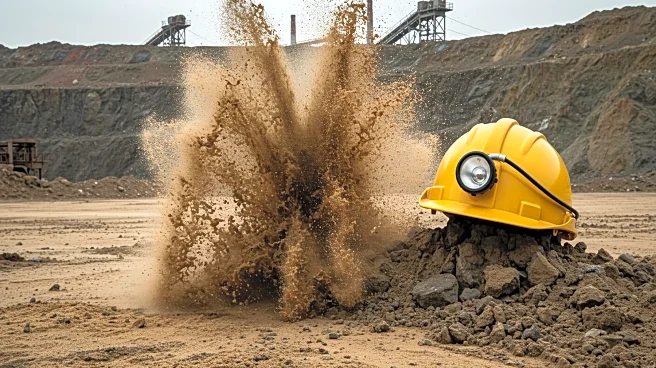What's Happening?
A new high-risk hazard has been identified in China's western mining regions, particularly in the Ningdong and Huanglong coal bases. These areas are experiencing compound roof water-sand inrush disasters alongside intense ground pressure. This dynamic hazard occurs in deep, weakly cemented bedrock strata, making it uniquely destructive compared to traditional non-dynamic water-sand inrush events. The simultaneous occurrence of water-sand inrush and intense mine pressure increases the risk of catastrophic failures, posing a major threat to mining safety and limiting the efficient extraction of coal resources. The geology of these regions presents challenges, with thick coal-bearing strata formed during the Jurassic period, which are weakly cemented and prone to disintegration.
Why It's Important?
The identification of this new hazard in China's mining regions has significant implications for the mining industry. The increased risk of catastrophic failures due to water-sand inrush and intense mine pressure could lead to severe economic losses and casualties. This poses a major threat to mining safety and the efficient extraction of coal resources. The situation underscores the need for improved safety measures and engineering solutions to mitigate the risks associated with mining in these geologically challenging areas. The findings also highlight the importance of understanding the geological conditions and implementing proactive prevention strategies to ensure the safety and sustainability of mining operations.
What's Next?
To address these challenges, an integrated proactive prevention strategy has been proposed. This includes advanced techniques such as hard rock pre-splitting and grouting reinforcement of weak formations. Future research will focus on analyzing how clay content, porosity, and loading affect the mechanical degradation of weakly cemented strata. Understanding stress variation in upper hard rock and main roof due to water-induced weakening will be crucial. The mining industry must prioritize safety and sustainability by implementing these strategies and conducting further research to prevent similar disasters in the future.











